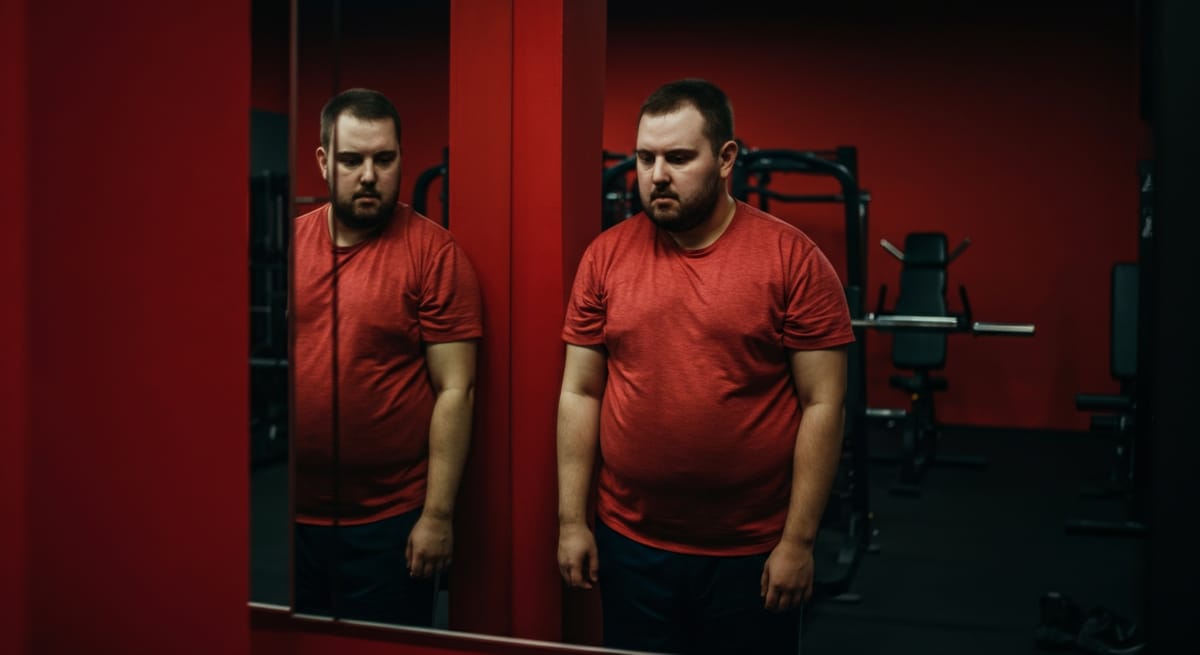10 Reasons Your Gym Routine Isn’t Working—And How to Fix It
The Silent Struggle in the Gym.

If you’ve been hitting the gym for months but still look the same, you’re not alone—and it’s not your fault. Research shows that 73% of men see no visible results after six months of training, despite putting in the effort.
Why? Most gym routines are built on mistakes that stall progress. The good news? Once you know the reasons your routine is failing, you can fix them—and start seeing results within weeks.
1. The Progress Plateau Problem
You show up, sweat, and push hard—but nothing changes. That’s a classic progress plateau.
Signs you’re stuck:
- Lifting the same weights every session
- No change in body composition
- Constant fatigue but no strength gains
The truth: showing up isn’t enough. Without a structured plan, your body adapts, and progress stalls. Let’s break down the failure points.
2. Failure Point: You’re Not Progressive Overloading
Lifting the same weights week after week is like spinning your wheels. Many men confuse being tired with progressing, but muscles only grow when you consistently demand more.
Fix it with simple rules:
- Track every workout—weight, reps, sets.
- Aim for a 2.5% increase each week (weight, reps, or sets).
- Use progression methods beyond load: tempo, range of motion, or reduced rest times.
Pro tip: If you benched 135 lbs for 8 reps last week, push for 9–10 this week, or move up to 140 lbs. Small wins compound fast.
3. Failure Point: Your Form Is Sabotaging Gains
Ego lifting feels good in the moment, but bad form kills long-term progress.
Common mistakes:
- Partial reps
- Swinging weights
- No mind-muscle connection
Fix it:
- Adopt the “ego check” protocol: drop 10–20% weight, master perfect form, then progress.
- Record yourself—video doesn’t lie.
- Use form-first progression, where weight only increases if reps are controlled.
Think of it this way: perfect form with 80 lbs builds more muscle than sloppy reps at 120 lbs.
4. Failure Point: Program Hopping Syndrome
Every 2–4 weeks you switch to a new YouTube plan or trending program. The result? Your body never adapts.
Fix it:
- Stick to a program for 8–12 weeks before making changes.
- Make small tweaks (like adjusting rep ranges) instead of starting over.
- Recognize the difference between a normal plateau (expected) and a real stall (no progress for 4+ weeks).
Discipline beats novelty—results come from consistency, not constant change.
5. Failure Point: Recovery Is an Afterthought
You can’t out-train poor recovery. Training 6–7 days a week with bad sleep is a recipe for burnout.
The hidden killers of recovery:
- Skipping rest days
- Sleeping less than 7 hours
- Stress overload (yes, it impacts gains)
Fix it:
- Train 3–5 days per week depending on experience.
- Make 7–9 hours of sleep non-negotiable.
- Add active recovery: walking, stretching, or yoga.
- Use stress management tools like breathwork or journaling.
Your muscles don’t grow in the gym—they grow while you rest.
6. Failure Point: Nutrition Disconnect
The phrase “I can out-train a bad diet” is a lie. Nutrition fuels recovery and muscle growth.
Fix it with simple nutrition rules:
- Align calories and macros with your goal (muscle gain or fat loss).
- Prioritize protein (1g per pound of body weight).
- Use the 80/20 rule: 80% clean, 20% flexible.
- Nail pre- and post-workout meals for energy and recovery.
Even the best workout plan fails if your diet isn’t in check.
7. The Complete Routine Audit
Before building your new routine, audit your current one.
Red flags:
- Same weights for months
- Training 7 days a week
- Random nutrition habits
Fix-It Action Plan:
- Weeks 1–2: Correct form, align nutrition, set sleep schedule.
- Weeks 3–4: Implement progressive overload.
- Week 5+: Fine-tune and reassess.
Think of it as resetting your foundation for long-term results.
8. Building a Bulletproof Routine
The best plan is one you can stick with. Here’s a proven framework:
- Beginners (3 days): Full-body workouts
- Intermediate (4 days): Upper/lower split
- Advanced (5 days): Push/pull/legs or body-part splits
Principles:
- Prioritize compound lifts (squat, bench, deadlift, pull-ups).
- Use progressive overload.
- Periodize (plan phases of volume, intensity, and recovery).
9. Tracking and Troubleshooting
Don’t rely on the scale alone. Use:
- Body measurements
- Weekly photos
- Performance logs
When to adjust:
- Plateau for 4+ weeks
- No strength or muscle gains
- Persistent fatigue
Troubleshooting fixes:
- Swap exercises, adjust volume, or reduce training days.
- If stuck, seek professional guidance.
10. The 30-Day Challenge
Change starts with a short commitment.
Action plan:
- Track every workout.
- Add 2.5% progression weekly.
- Fix form and film key lifts.
- Prioritize 7–9 hours of sleep.
- Meal prep 2–3 days per week.
Expected results: Noticeable strength gains, better recovery, and improved confidence within 30 days.
FAQ Section
How long before I see results?
Most men notice visible changes in 8–12 weeks with consistency in training, diet, and recovery.
What if I can only train 3 days per week?
A full-body routine is highly effective for 3-day schedules. Consistency matters more than frequency.
Should I change my routine if I’m seeing some results?
Not yet. If you’re making progress—even slowly—stick with it. Change only after progress halts for several weeks.
Can I build muscle while losing fat?
Yes—especially if you’re new to lifting. Prioritize high protein intake and strength training while maintaining a slight calorie deficit.
How do I know if I’m overtraining?
Signs include chronic fatigue, poor sleep, nagging injuries, and irritability. If this happens, scale back volume and focus on recovery.
Conclusion: Your New Starting Line
If your gym routine isn’t working, it’s not because you’re lazy—it’s because the plan is broken. The good news? You now know the 5 failure points and how to fix them: progressive overload, proper form, consistency, recovery, and nutrition.
Choose one fix to implement today and build momentum. Within weeks, you’ll see progress. Within months, you’ll transform.
ActiveMan — Make Your Move
The Modern Guide to Men’s Health, Fitness & Lifestyle.





